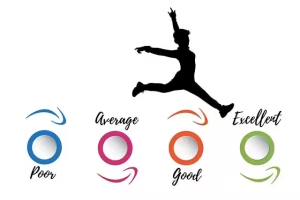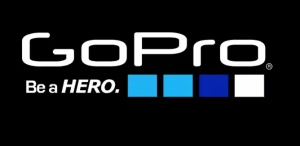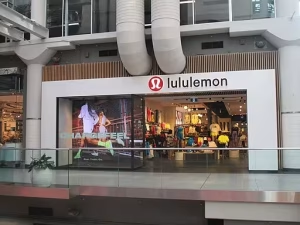In the modern business world, every company faces the same essential challenge: how do you cut through the constant digital noise to build real, authentic connections with customers? The answer doesn’t lie in bigger advertising budgets or slicker marketing campaigns. It lies with your customers themselves. This is the power of user-generated content, which is any form of content like text, videos, images, or reviews created by consumers rather than by the brands themselves.
This article will help you cut through the noise, not only showcasing powerful user-generated content examples from brands big and small but also providing a strategic blueprint for your business to collect, manage, and use this content to build powerful trust, drive engagement, and ultimately increase your revenue.
What is User-Generated Content (UGC) and Why is it a Non-Negotiable Asset?

User-generated content is a simple concept. It’s any content that your audience, customers, or fans create that features your brand, products, or services. Think of a customer posting a photo on Instagram wearing your brand’s shirt, a detailed review of your software on a blog, or an unboxing video on YouTube. That is all valuable user-generated content. It’s the digital equivalent of word of mouth, and it’s one of the most powerful marketing assets a business can have.
So, why is this type of content so critical for your business? The reasons are rooted in fundamental human psychology and deliver tangible business results.
Authenticity and Trust: People trust people more than they trust brands. According to numerous studies, over 90% of consumers trust recommendations from peers, while fewer than 40% trust traditional advertising. When a potential customer sees a real person enjoying your product, it acts as a powerful, unbiased endorsement. This authentic advocacy is something money can’t buy. Relying on user-generated content is a strategy that builds a foundation of trust that traditional marketing struggles to achieve.
Increased Conversion Rates: Trust directly leads to sales. When e-commerce sites feature user-generated content, like customer photos or reviews, directly on their product pages, they often see a significant increase in conversion rates. This is because this content answers questions and removes doubts in a potential buyer’s mind. Seeing someone with a similar body type wearing a piece of clothing or watching a video of a tool being used for a specific project provides the social proof needed to click “buy now.” Good user-generated content acts as a final nudge for hesitant customers.
Cost-Effectiveness: Think about the cost of a professional photoshoot, hiring models, finding a location, and post-production. It adds up quickly. While that has its place, a steady stream of user-generated content can fill your marketing calendar with high-quality, authentic visuals for a fraction of the cost. You get a diverse library of creative assets that reflect how real people use your products in their everyday lives. This makes the effective use of user-generated content a budget-friendly powerhouse.
SEO Benefits: Search engines like Google love fresh, relevant content. User-generated content, especially in the form of reviews on your site or on platforms like Google My Business, provides a constant source of new content rich with keywords related to your business. This signals to Google that your business is active, relevant, and valued by customers, which can improve your search rankings, particularly for local businesses. This consistent flow of user-generated content helps keep your brand top-of-mind for search engines.
The Four Primary Categories of User-Generated Content

User-generated content comes in many forms. Understanding the main categories helps you identify opportunities and build a strategy to encourage different types of submissions from your audience.
1. Reviews and Testimonials: This is perhaps the most common and direct form of user-generated content. When a customer leaves a star rating or writes a few sentences about their experience, they are creating valuable content that influences others.
- Platforms: This happens on dedicated review sites like Google My Business, Yelp, and Trustpilot, on e-commerce marketplaces like Amazon or Etsy, and directly on your own website’s product pages.
- Impact: Reviews are direct social proof. A high volume of positive reviews builds immediate credibility. Even negative reviews, when handled professionally and publicly, can demonstrate excellent customer service and build trust. This is a foundational type of user-generated content every business needs.
2. Visual Content (Images & Videos): Visual content is highly engaging and shows your product in the real world. This is where customers can truly get creative and show their love for your brand.
- Platforms: The primary hubs for visual user-generated content are Instagram, TikTok, Pinterest, and Facebook.
- Examples: This includes photos of customers using your product, creative flat lays featuring your items, unboxing videos that capture the excitement of receiving a package, and “how-to” tutorials made by fans.
- Impact: Visuals are easily shareable and can quickly go viral. They provide context and help potential customers visualize themselves using your product, making it much more relatable than a sterile product photo from a studio.
3. Social Media Mentions and Comments: Every time a customer tags your brand in a post or uses your campaign hashtag, they are creating user-generated content.
- Platforms: This is most common on fast-paced platforms like X (formerly Twitter), Facebook, and LinkedIn.
- Examples: A customer might post a photo of their lunch and tag your restaurant, tweet about a great customer service experience they had, or use your branded hashtag to enter a contest. Even comments on your own posts can be a form of user-generated content, creating a space for community discussion.
- Impact: Social media mentions amplify your brand’s reach to new audiences. They also build a sense of community around your brand, making customers feel seen and heard when you engage with their posts.
4. Blog Posts, Forum Discussions, and Case Studies: This is a long-form type of user-generated content that can be incredibly valuable for businesses with more complex products or services.
- Platforms: This content appears on personal blogs, industry forums like Reddit or Quora, and in the form of detailed customer success stories.
- Examples: A tech blogger might write an in-depth review of your software, a hobbyist might post a detailed project guide using your materials on a Reddit community, or a B2B client might agree to be featured in a case study.
- Impact: This type of user-generated content often carries a high level of authority and trust. It can drive significant, highly qualified traffic and is excellent for niche markets where potential customers are doing deep research before making a purchase.
15 High-Impact User-Generated Content Examples Analyzed
Studying successful campaigns is the best way to understand the power of user-generated content. Let’s break down examples from both global giants and smaller businesses to see what lessons you can apply.
Global Brand Examples

1. Apple’s #ShotOniPhone Campaign
- Brand: Apple
- UGC Type: Visual Content (Images & Videos)
- The Strategy: Apple encouraged users to post their best photos and videos taken with their iPhones using the hashtag #ShotOniPhone. The company then selected the best submissions to feature on massive billboards, in TV commercials, and across their social media channels.
- The Small Business Takeaway: You don’t need billboards to make this work. The core lesson is about empowering your customers to showcase the quality of your product. Run a photo contest for your product and feature the winners prominently on your website’s homepage, in your email newsletter, and on your social media feeds. It turns customers into your creative directors.

2. GoPro’s “Photo of the Day”
- Brand: GoPro
- UGC Type: Visual Content (Videos & Photos)
- The Strategy: GoPro’s entire brand is built on user-generated content. They encourage their users, who are often adventure seekers, to submit their most stunning action shots. GoPro then features a “Photo of the Day” or “Video of the Day” across its massive online presence.
- The Small Business Takeaway: Build a brand identity around how your customers live. If you sell hiking gear, feature customer photos from the trail. If you sell kitchen gadgets, share videos of the delicious meals your customers create. This strategy associates your product with a desirable lifestyle.

3. Coca-Cola’s “Share a Coke” Campaign
- Brand: Coca-Cola
- UGC Type: Social Media Mentions
- The Strategy: Coca-Cola replaced its iconic logo on bottles with thousands of common names. This simple personalization prompted countless people to find bottles with their name or the names of friends and family, take a picture, and share it online with the #ShareACoke hashtag.
- The Small Business Takeaway: Personalization drives sharing. While you can’t print custom labels for every customer, you can create experiences that feel personal. This could be as simple as writing a handwritten thank you note in an order, which people often photograph and share.

4. Starbucks’ #WhiteCupContest
- Brand: Starbucks
- UGC Type: Visual Content
- The Strategy: Starbucks invited customers to draw creative designs on their iconic white cups and submit photos of their artwork. The winning design was turned into a limited-edition reusable cup.
- The Small Business Takeaway: Gamify engagement. Turn your product or packaging into a blank canvas for your customers’ creativity. A contest with a compelling prize encourages high-quality user-generated content and makes your customers feel involved in your brand’s story.

5. Aerie’s #AerieREAL Campaign
- Brand: Aerie
- UGC Type: Visual Content
- The Strategy: The clothing brand Aerie launched a campaign encouraging women to post unedited photos of themselves in Aerie swimwear and apparel. For every post, the company donated money to a charity.
- The Small Business Takeaway: Connect your user-generated content campaign to a mission or value that your audience cares about. This gives people a deeper reason to participate beyond just winning a prize. It shows that your brand stands for something important.

6. T-Mobile’s Customer Service on X
- Brand: T-Mobile
- UGC Type: Social Media Mentions
- The Strategy: The former CEO of T-Mobile was famous for his direct engagement with customers on X. People would tweet their problems, and he would often respond publicly, ensuring the issue was resolved. This created a huge amount of positive user-generated content about their customer service.
- The Small Business Takeaway: Use social media as a transparent customer service channel. When you solve a problem for a customer publicly and politely, you are not just helping one person; you are demonstrating to everyone watching that you care about your customers.

7. Lululemon’s Ambassador Program
- Brand: Lululemon
- UGC Type: Visual & Social Content
- The Strategy: Lululemon partners with yoga instructors and fitness trainers in local communities to be brand ambassadors. These ambassadors create a steady stream of authentic user-generated content by featuring the products in their classes and on their social media profiles.
- The Small Business Takeaway: Identify your power users or biggest fans and give them a special title or perks. Make them feel like insiders. These brand advocates will often become your most prolific creators of high-quality user-generated content.
8. Buffer’s Community on Slack/Social
- Brand: Buffer
- UGC Type: Forum Discussions & Feedback
- The Strategy: The social media management tool Buffer has built a strong community by being incredibly transparent. They actively solicit feedback on new features from their users in Slack channels and on social media, making customers feel like they are co-creating the product.
- The Small Business Takeaway: Create a space for your customers to talk to you and to each other. This could be a Facebook group, a Discord server, or simply by fostering discussion in the comments section of your posts. Use their feedback to make real changes, and they will become deeply loyal.
Small & Local Business Examples
9. Local Coffee Shop’s “Mugshot Monday”
- The Strategy: A neighborhood coffee shop encourages customers to post a photo with their coffee on Mondays using the hashtag #CaffeineAndCoMugshot. Each week, they pick one winner who gets a free coffee.
- The Takeaway: A simple, repeatable weekly campaign can build a habit among your customers and generate a consistent flow of user-generated content.
10. Local Bookstore’s Customer Reviews
- The Strategy: An independent bookstore encourages customers to leave handwritten reviews on index cards. They then pin these cards to the shelves below the books, creating “shelf talkers.” They also photograph these cards and share them on social media.
- The Takeaway: Blend the physical and digital. Encourage in-person user-generated content and then share it online to amplify its reach.
11. B2B SaaS Company’s Case Studies
- The Strategy: A software company that sells project management tools identifies clients who have seen great results. They interview them and turn their success stories into detailed case studies that they feature prominently on their website.
- The Takeaway: For B2B businesses, in-depth user-generated content is key. A detailed success story from a happy client is more persuasive than any sales pitch.
12. Local HVAC Contractor’s Video Testimonials
- The Strategy: After a successful installation or repair, a heating and cooling company asks the homeowner if they would be willing to record a short video testimonial on their phone. They offer a small discount on a future service in exchange.
- The Takeaway: Video testimonials are incredibly powerful for service based businesses. Hearing and seeing a happy customer builds a high level of trust that is crucial when inviting someone into your home.
13. Etsy Seller’s Customer Photos
- The Strategy: A person who sells handmade home decor on Etsy includes a small note in every order encouraging buyers to post a photo of the item in their home and tag their shop. They then reshare these photos on their Instagram.
- The Takeaway: Don’t be afraid to simply ask. A friendly and personal request is often all it takes to get great user-generated content. Make it part of your fulfillment process.
14. Local Gym’s Member Progress
- The Strategy: A local gym celebrates its members’ achievements by sharing their progress posts (with permission, of course). They highlight member milestones and success stories on a “Wall of Fame” in the gym and on their social channels.
- The Takeaway: Make your customers the heroes of your brand’s story. Celebrating their successes creates a positive, supportive community that new members will want to join.
15. Landscaping Company’s Client Portfolio
- The Strategy: A landscaping company creates a stunning online portfolio composed almost entirely of photos their clients have sent them of their finished gardens and patios throughout the seasons.
- The Takeaway: Your customers can be your best photographers. Their perspective shows what it’s like to actually live with and enjoy the results of your work, which is often more powerful than professional, staged photos.
A Strategic Framework for Acquiring High-Quality UGC
Hoping for user-generated content isn’t a strategy. You need to be proactive and build a system to encourage it.
- Step 1: Define Your Goal. What do you want to achieve? Be specific. Do you need more photos for your Instagram feed? Do you want more positive reviews on your Google My Business profile? Your goal will determine your approach.
- Step 2: Create a Branded Hashtag. Your hashtag should be unique to your brand, short, memorable, and easy to spell. This acts as a digital filing cabinet for all the user-generated content related to your campaign.
- Step 3: Launch a Campaign or Contest. The easiest way to kickstart submissions is to offer an incentive. This could be a giveaway for a big prize, a chance to be featured on your social media channels, or a discount code for everyone who participates. Make the rules clear and simple.
- Step 4: Actively Ask for It. You need to ask for the content you want. Put a call to action in your social media bios. Send post-purchase emails specifically asking for a review. Include a small card in your packaging that encourages customers to share a photo online.
- Step 5: Make it Easy to Submit. Don’t create barriers. Tell people exactly what you want them to do and where you want them to post it. The fewer steps involved, the more participation you will get.
The Legal Side of UGC: Navigating Copyright and Usage Rights
Before you start sharing your customers’ content, it’s crucial to understand the rules. The most important rule of using user-generated content is this: always ask for permission.
- Copyright Ownership: The person who created the content (the photographer, the writer) owns the copyright to it, not your brand. Simply because they used your hashtag or tagged your brand does not automatically give you the right to use their photo in your advertising.
- Getting Permission: The best way to get permission is to comment on their post or send them a direct message. Be clear and specific. Say something like, “This is a great photo! We’d love to feature it on our Instagram feed and website. If you’re okay with that, please reply with #Yes[YourBrand].” Saving a screenshot of their affirmative reply is a good practice.
- Credit the Creator: Whenever you reshare user-generated content, you must give credit to the original creator by tagging them in the photo and/or mentioning their username in the caption. It’s the right thing to do, and it encourages others to share their content with you in the future.
Managing the Risks: The Disadvantages of User-Generated Content
While powerful, a user-generated content strategy is not without potential challenges. Being prepared for them is key.
- Negative Content: Not all user-generated content will be positive. You will get negative reviews or see critical posts.
- Mitigation: Have a plan. Never delete negative feedback (unless it is spam or offensive). Respond publicly, politely, and professionally. Offer to take the conversation offline to resolve the issue. This shows other customers that you take feedback seriously.
- Inconsistent Quality: The photos and videos your customers create will vary in quality. Some will be amazing, and some will be blurry or poorly lit.
- Mitigation: This is where curation comes in. You don’t have to share every piece of user-generated content you receive. Pick the best examples that align with your brand’s aesthetic. You can also provide simple “photo tips” to your audience to help them create better content.
- Time and Resource Investment: A successful strategy requires active management. You need to monitor hashtags, engage with submissions, get permissions, and schedule posts.
- Mitigation: Start small. You don’t need a massive campaign on day one. Begin by simply monitoring your brand mentions and asking for permission to reshare the best posts. As you grow, you can explore social media management tools that can help streamline this process.
Tools and Platforms to Aggregate and Manage UGC
For businesses that get serious about user-generated content, several tools can help manage the process. Platforms like Yotpo, Bazaarvoice, and Pixlee are designed to help you collect, get rights for, and display user-generated content on your website and in your marketing. For smaller businesses, many social media management tools like Sprout Social or Agorapulse have features that allow you to monitor mentions and hashtags, making it easier to find and engage with great user-generated content.
Conclusion: Activate Your Customers as Your Best Marketers
Ultimately, user-generated content is about more than just marketing. It’s about building a community. It’s about shifting the focus from your brand being the hero to making your customer the hero of the story. The content they create is the most authentic, trustworthy, and engaging asset you have. Businesses of any size, from a local coffee shop to a global software company, can and should build a strategy around this powerful concept. So, start today. Launch your first small-scale user-generated content initiative this week. Create a hashtag, and ask your next ten customers to share a photo. You might be amazed at what they create.







